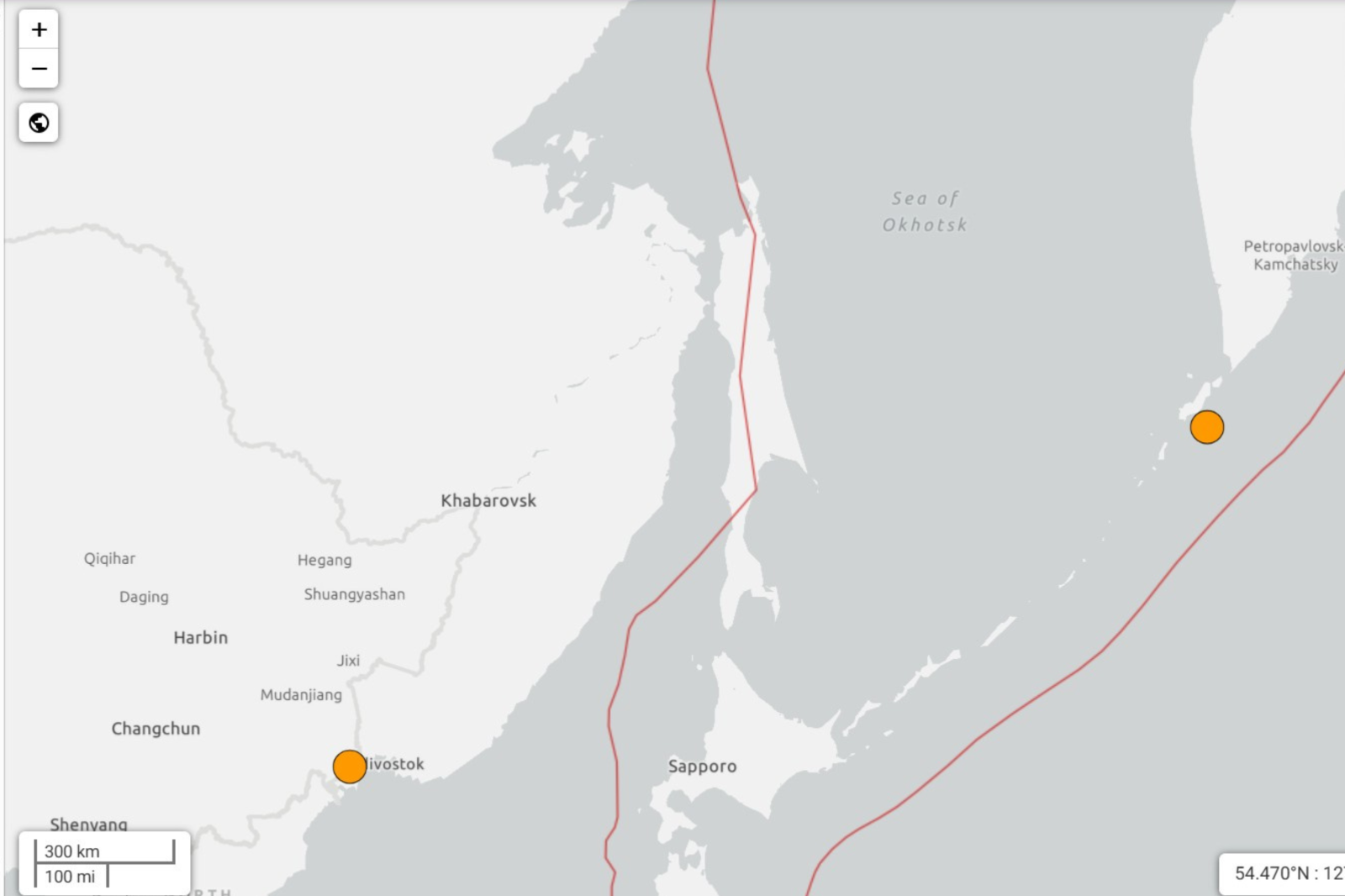Copyright newsweek

Two earthquakes shook Russia’s Kamchatka Peninsula on Saturday, according to the United States Geological Survey (USGS). The region, already one of the most seismically active in the world, continues to experience heightened activity following a series of powerful events earlier in the year, including a record-setting 8.8-magnitude quake in July. No injuries or significant damage were immediately reported from the latest events Saturday, but seismologists continued monitoring for further aftershocks and risks to the broader Pacific region. Why It Matters The ongoing seismic activity in Russia’s Kamchatka region highlights the persistent threat posed by the Pacific Ring of Fire, a tectonic zone responsible for frequent and sometimes catastrophic earthquakes and volcanic eruptions. The July 2025 8.8-magnitude earthquake was among the strongest globally since the 2011 Tōhoku disaster in Japan and prompted tsunami warnings across the Pacific, including in the United States and as far as French Polynesia and Chile. This cluster of quakes serves as a reminder that large subsea seismic events near Russia can trigger trans-Pacific tsunami alerts, with possible effects for Alaska, Hawaii, and the US West Coast. A map from the United States Geological Survey (USGS) shows seismic activity on the Kamchatka Peninsula. What To Know The pair of earthquakes that struck Saturday were both moderate in strength, measuring at 5.2 and 5.3 magnitude, according to the USGS. The USGS has recorded at least 13 distinct earthquakes off the Kamchatka Peninsula in early October, ranging from magnitude 4.4 to 6.1 and at depths of 6 to 46 miles, about 10 to 75 kilometers. The strongest of these, a 6.1-magnitude event, struck about 112 miles southeast of Vilyuchinsk at a depth of 11 miles on October 3. No tsunami warnings were issued and there were no immediate reports of injuries or property damage. The Kamchatka Peninsula’s ongoing sequence of quakes followed a massive 8.8-magnitude earthquake on July 29, the strongest recorded in Russia’s Far East in decades. That quake, with an epicenter 74 miles east-southeast of Petropavlovsk-Kamchatsky, was shallow and lasted at least three minutes. It generated tsunami waves of up to five meters along parts of the Kamchatka coast and forced tsunami warnings as far away as Japan, Hawaii, and parts of South America. The July quake was followed by significant aftershocks, including a 7.8-magnitude event and subsequent clusters of moderate to strong quakes ranging from 4.4 to 6.1 in magnitude. Despite the scale, injuries were limited and fatal outcomes avoided. The July 2025 quake produced a Pacific-wide tsunami that was weaker than expected but still resulted in wave heights of up to 19 feet (5–6 meters) in some areas of Russia and approximately 1.7 meters in Hawaii. Evacuation orders were issued across Japan, the Galapagos Islands, and French Polynesia. In Japan, 21 injuries and one indirect fatality occurred during evacuations, while damage in Russia included power outages and water damage in coastal towns. Located on the Kuril–Kamchatka subduction zone, Kamchatka is prone to frequent seismic events due to ongoing tectonic activity between the Pacific and Okhotsk plates. Experts have warned that aftershocks and additional strong earthquakes are likely to continue, according to a USGS forecast published soon after the July event, which projected a 24 percent chance of another magnitude 7 or higher earthquake in the months following. What People Are Saying Steve Sobie, spokesperson for the USGS told Newsweek in an email last month: “On July 29, 2025, the Kamchatka Peninsula, Russia, experienced a M8.8 earthquake. This was tied for sixth largest earthquake ever recorded. Since then, there have been at least 2,877 aftershocks in the region. Aftershocks from such a large earthquake will continue for weeks, months, or even years later. The largest aftershock we’ve seen was a M7.8 on Sept 19. The recent M4.7 and M4.6 from earlier today (Sept 29) are further examples of common activity after such a large event…There is a greater than 99% chance that magnitude 4.0+, 5.0+, and even M6.0+ will continue to occur over the first year after the quake.” What Happens Next Seismic monitoring agencies, including the USGS and Russia’s United Geophysical Service, are closely watching ongoing aftershocks and updating hazard assessments for Kamchatka and other affected regions. Disaster response agencies have heightened readiness for potential further activity and remain prepared to issue additional tsunami warnings if necessary. The USGS aftershock forecast indicated that Kamchatka could see more strong events in the coming months or years, with continued risk to local populations and across the Pacific basin.



